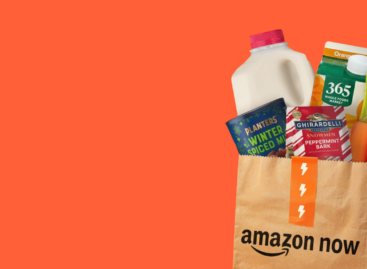E-commerce trends in 2023
In the past few very eventful years, the reliability of forecasts by researchers became somewhat questionable. We at NRC have a decades-long overview of e-commerce trends, as being the biggest Hungarian online research firm basically makes it obligatory for us to audit this channel too.


Guest writer:
Ferenc Sági
head of research
NRC
The Covid didn’t bring the new normal, but it speeded up the old one. More and more consumers began using the different online channels, but by the time we started defining the changes that had occurred in the previous 2-3 years as a trend, another crisis hit us, the outcome of which we can’t tell at the moment. All of this makes consumer behaviour very unpredictable – as it can be seen very well from our November survey too.
What is certain…
Several things seem to be certain in the world of e-commerce. E-consumer penetration can’t grow any further and it can’t really shrink either. Already before Covid more than 70% of consumers ordered something online minimum once a year, and by 2020 this ratio reached 83%, where it has stayed ever since. Between 2017 and 2019 7-8% were ordering groceries online, then in 2020 this proportion jumped to 14-15% and it has remained there. Certain sectors simply can’t be separated from e-commerce, and a typical example of this is the OTC market. Toys and games, beauty products, DIY and consumer electronics also seem to be product categories that do very well online. During the pandemic 75-80% of consumers had the products they had bought online delivered to their homes, but by now this rate has dropped to 65%. At the same time parcel locker (e.g. Foxpost) use is growing rapidly. It very much seems that no consumer attitude or expectation will break the growth trend in parcel locker delivery. Consumers trust online shopping much more than 2-3 years ago. This trend has a positive influence on the number of purchases made on social media platforms (e.g. Marketplace).
…and what is uncertain
What has become uncertain because of the current crisis in the field of e-commerce? Annual online buying frequency has come to a halt and the sum spent shopping online is in stagnation; what is more, calculated in real value, this sum is actually decreasing, as we only measured a 9% bigger value in Q4 2022 than a year earlier. We thought that cash payment in online shopping would continue to rapidly lose ground after the pandemic, but this didn’t happen. Although the proportion of online shoppers who (also) pay in cash reduced by 10-15 percentage points in the last few years, this is still the most popular form of payment. The number of online orders from abroad dropped, in spite of the fact that the proportion of online shoppers ordering from abroad increased hand in hand with ordering from online shops based in Hungary (in terms both frequency and volume). This trend came to a halt when the number of orders from China dropped once an import tax was imposed on such goods from 2021. //
This article is available for reading in Trade magazin 2023.2-3.
Related news
120 million online orders in 2025, 8% domestic and 22% import growth: here is the most comprehensive domestic research on e-commerce
🎧 Hallgasd a cikket: Lejátszás Szünet Folytatás Leállítás Nyelv: Auto…
Read more >Amazon tests delivery in half hour or less
🎧 Hallgasd a cikket: Lejátszás Szünet Folytatás Leállítás Nyelv: Auto…
Read more >The big winners of Hungarian e-commerce are the customers: GLS and DPD have signed a strategic partnership for even more flexible package collection
🎧 Hallgasd a cikket: Lejátszás Szünet Folytatás Leállítás Nyelv: Auto…
Read more >Related news
(HU) A nap mondása
🎧 Hallgasd a cikket: Lejátszás Szünet Folytatás Leállítás Nyelv: Auto…
Read more >(HU) Kautzky Szemők Adrienn: Vigyázzunk a sarlatánokkal
🎧 Hallgasd a cikket: Lejátszás Szünet Folytatás Leállítás Nyelv: Auto…
Read more >The Hortobágy fish farm delivers one hundred tons of fish to stores every day
🎧 Hallgasd a cikket: Lejátszás Szünet Folytatás Leállítás Nyelv: Auto…
Read more >






